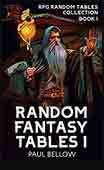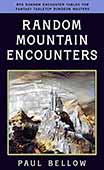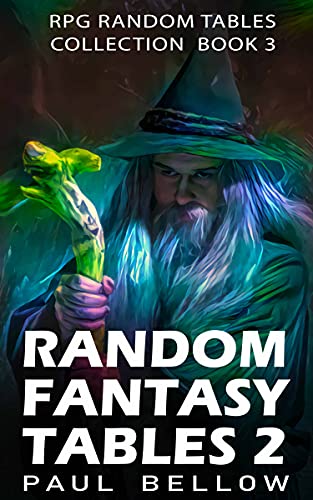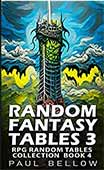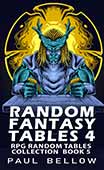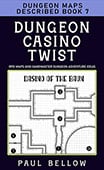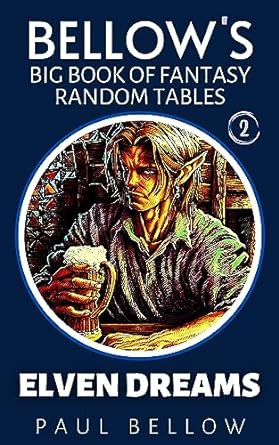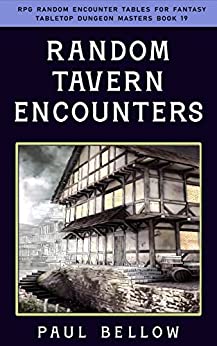Character flaws breathe life into adventurers, anchoring them to a world that bristles with uncertainty and sharp contrasts. Without those ragged edges and quiet weaknesses, even the boldest hero slides into forgettable sameness, their victories hollow and opaque. Deliberate imperfections (flaws crafted with care, not born of oversight) plant seeds for transformation in the stony ground of every Dungeons & Dragons campaign. They stain the mythic with doubt, lace bravery with hesitation, infuse every dice roll with the ache of unfinished business.
Flaws, in this story-forged context, signify more than a limp or a sharp tongue. They speak to vulnerabilities woven deep into the marrow: fears unspoken, sets of beliefs too rigid to yield, seething jealousy behind a practiced grin. Through these breaks in the armor, story seeps like rainwater, turning static archetypes into living, breathing enigmas. Characters wrestle with their own shadows, driven not only by quests for treasure but also by the gnaw of their own limitations.
Every flaw sketches an invitation, an unraveling along which adversity slides in. Mistakes become teachers, not simple setbacks, forcing characters to recalculate and change. A warlock’s temper scorches alliances; a cleric’s guilt swells behind every prayer. Each stumble and misstep expands the possibility for growth, refusing players the luxury of easy answers. The deeper the flaw winds through the hero, the richer the soil for narrative complications and unexpected epiphanies.
Surface quirks rarely sharpen the stakes. Flaws that matter burrow into identity, steering crucial choices and outlining the paths of regrets and hope alike. A character who suffers real consequences when pride or fear guides their hand commands attention at the table. The clash between wound and want, between what a character seeks and what holds them back, sizzles with potential for transformation.
Playing these flaws out loud, letting the story chart their evolution or devastation, magnifies immersion. Players chase arcs spun not by designed victory but by honest failure, and Dungeon Masters catch sparks of drama that only arise when someone risks mess and vulnerability. The table hums with tension as each flaw threads danger and chance together, giving every decision a taste of permanence.
This approach rewards more than just narrative ambition—it enriches the very marrow of D&D. Flaws, integrated with intent and never abandoned to the sidelines, serve as a crucible for richly layered storytelling. Whether redemption dawns or tragedy deepens, the experience wraps around players and DMs both, offering catharsis, surprise, and the thrill of growth earned the hard way.
Try my AI Tabletop RPG generators...and an extensive library of content!
This article dives headlong into the gears of flawed character creation, exploring how immersion, narrative tension, and the deepest satisfaction ignite when flaws are embraced and played through. Players and Dungeon Masters alike will find tools here for wielding character flaws as more than seasoning—they’ll find a recipe for stories no dice roll alone could create.
Understanding Flaws in D&D Characters
In Dungeons & Dragons, a flaw slices deeper than a habit or passing mood. Meaningful flaws gnaw at core beliefs, shred comfort, and slide silent fingers into motivations. The difference between a real flaw and a quirky embellishment comes alive in how the story bends around it—quirks fade when ignored while true flaws echo in every decision, shaping conversations and risking trust.
Common flaws splinter into distinct types. Some carve out the psyche, like crushing guilt or burning jealousy. Others, moral flaws, warp choices and poison allegiances—think reckless ambition, festering grudges, compulsive lying. Emotional flaws lash out raw and unchecked, ranging from blinding rage to paralyzing insecurity, while physical flaws—frailty, injuries, disabilities—warp adventuring in more tactile directions. Then there are flaws written in history, old wounds and buried secrets that surface when least expected.
Slapping on a flaw just to check a box dilutes narrative potential. Flaws need relevance; they must walk beside players during decision-making and social interaction alike. A wizard’s arrogance must rear its head when asked for help, not just fester in private monologue. Flaws, once chosen, demand to complicate every dynamic, prompting growth or decay as the story unfolds.
⚔️ Fantasy RPG Random Tables Books
Make life as a Gamemaster easier…
If you play Dungeons & Dragons, Pathfinder, or other fantasy RPGs, this
RPG random tables series
is packed with encounters, NPCs, treasure, and more. Available in eBook or print—either way, you’ll have a wealth of adventure ideas at your fingertips.
Selecting appropriate flaws takes intention. Players might begin by asking which limitation would most frustrate their character’s core desires or strengths. Does the paladin’s pride prevent apology? Does the ranger’s grief curdle each new friendship? Aligning a flaw with anticipated story arcs opens doors for pain, reconciliation, and everything tangled in between.
Effective flaws ignite both internal and external friction. On one hand, a stubborn bard may burn bridges, while on the other, that same stubbornness might propel her through odds that would break a lesser ego. The push and pull of trying, failing, and learning—sometimes the hard way—roots character growth in grounded, powerful storytelling.
Look for those flaws that force introspection after failure, or that tempt the character toward reckless acts. Real growth often flickers in the aftermath of mistakes: resolve tested, motivations re-forged, or new weaknesses discovered. Flaws inject stakes into each interaction, shaping party bonds and rolling out red carpets for dramatic reversals.
Players and Dungeon Masters alike hold the keys to these complexities. By crafting and shepherding meaningful flaws into every scene, they turn the game into more than a treadmill of battles and puzzles. The process breathes risk and hope into every session, forging new memories born of adversity faced and survived.
Types of Character Flaws and Their Narrative Impact
Flaws dart along fault lines, each type baiting different stages of a character’s arc. Moral failings, like greed or dishonesty, gum up virtue and steer the plot toward betrayal, atonement, or both. These flaws tempt heroes to compromise, and when the bill comes due, the cost is measured in blood and trust—not in gold.
Emotional flaws drive instability. Jealousy pulses in party politics, insecurity throttles teamwork, fear freezes action in the monster’s shadow. Such wounds turn ordinary scenes inside-out, smiling masks cracking as hidden pain erupts at inopportune times. Redemption arcs, tragic falls, or spurts of raw self-discovery spin from these sources, shaping sessions in unpredictable directions.
Physical flaws play rougher games. An archer with a maimed hand must fashion new tactics. A frail scholar’s body limits their options, forcing reliance on wit and allies. These traits invite moments of humiliation or triumph—outwitting captors rather than overpowering them, surviving because of intellect or foresight rather than brute force.
Each category lights new storytelling beacons. A morally flawed fighter may stumble into a redemption arc when they finally resist temptation. Someone scarred by trauma may transform tragedy into heroism through acts of resilience and self-acceptance. No two journeys repeat themselves if the flaws are played true.
Flaw selection should dance in tandem with the shape of the intended narrative. Players hoping to traverse redemption need flaws that cut against their goals, while those hurtling toward tragedy must embody the seeds of their undoing. Matching flaw to destiny ensures every moment feels earned rather than forced.
The best flaws never rest as background flavor. They pop in the spotlight, calling for choices at crossroads, demanding sacrifice or doubling down. That constant pressure creates tension both at the table and in the story, fueling surprises that stick in memory long after victory or defeat.

Examples of Flaws and Their Narrative Drives
- Impulsiveness: Acts before thinking, triggering danger or unintended consequences that force reflection.
- Trust issues: Reluctant to rely on others, risking isolation until dramatic betrayal or needed teamwork emerges.
- Pride: Refuses help or backs down slowly, sparking costly rivalries and lessons in humility.
- Guilt: Haunted by past mistakes, shaping redemption arcs or paralyzing action at critical junctures.
- Jealousy: Covets another’s power or attention, sowing conflict that might shatter or mend alliances.
- Physical frailty: Lacks stamina or strength, leading to clever problem-solving or dependence on others.
- Absent-mindedness: Forgets vital details, directly escalating dangers or inspiring creative rescues.
- Agoraphobia: Fears open or crowded spaces, complicating travel and social strategy.
- Compulsion: Obsessively collects, cleans, or arranges, driving party tension or plot complications.
- Short temper: Snaps under pressure, damaging relationships or running headlong into traps.
- Cynicism: Doubts others’ motives, estranging companions until proved wrong or vindicated.
- Deep-rooted prejudice: Distrust toward a specific group creates moral dilemmas for the party.
- Fear of magic: Avoids or sabotages arcane solutions, posing unique challenges for spellcasting groups.
- Chronic pain: Endures constant discomfort, motivating innovation or grim perseverance.
- Secret shame: Guards a scandalous past, fueling paranoia and eventual catharsis.
- Social ineptitude: Fumbles etiquette, complicating diplomacy and recruitment.
- Greed: Prioritizes loot over loyalty, risking betrayal or necessitating redemption.
- Obsession with perfection: Refuses to accept defeat or error, throttling party progress or risking mental collapse.
- Pacifism: Refuses lethal action, sparking conflict in martial situations and requiring creative resolution.
- Loyalty to a fault: Sacrifices self-interest for others, accidentally enabling manipulation or disaster.
- Paranoia: Suspects plots at every turn, slowing progress or exposing true threats.
- Envy: Longs for another’s skills or possessions, stoking rivalry and eventual reconciliation.
- Overconfidence: Underestimates dangers, inviting failure or ripe humility.
- Self-loathing: Undermines own achievements, requiring nurture from companions and internal acceptance.
Players can wield these flaws as narrative fuel. Impulsiveness triggers crisis, demanding a rethink. Trust issues fracture alliances, then bind stronger when overcome. Pride carves rifts and sets the stage for bittersweet learning, while frailty challenges the usual hack-and-slash rhythm, making every victory sweeter and more personal.
⚔️ Fantasy RPG Random Tables Books
Make life as a Gamemaster easier…
If you play Dungeons & Dragons, Pathfinder, or other fantasy RPGs, this
RPG random tables series
is packed with encounters, NPCs, treasure, and more. Available in eBook or print—either way, you’ll have a wealth of adventure ideas at your fingertips.
Dungeon Masters and players spin this complexity into the weave of play by spotlighting flaws in pivotal moments. Encourage characters to confront their fault lines under fire—pride burning through etiquette at a royal court, or a jealous act nearly derailing the mission. Successful campaigns never hide these struggles away; instead, flaws act as gears, grinding out narrative tension and emotional payoffs.
Timing challenges lets flaws sing. As danger coils, throw dilemmas where the flaw holds sway—when the door locks behind and the only key is held by an old enemy. Encourage cathartic resolution, or double down for irony and heartbreak. In every case, growth pivots on facing—not avoiding—what makes each hero human.
Balance matters. Flaws must pose challenge without flattening hope. Keep open dialogue flowing; check in on the impact and recalibrate when frustration trumps fun. The goal rests not in punishment but in forging a collective journey, every step shaped by the cracks in each shining armor.
Set the tone early. Whether during session zero or the campaign’s first blood, narrate flaw-driven moments with gravitas. Let pain and triumph unfold organically, inviting every party member to buy in. The tale tastes richer when everyone pushes through story for the prize of hard-won growth.
Embrace consequence. If a bard’s jealousy ignites a violent altercation, let the fallout matter. If the group rallies or splits, showcase the process. Reward creative struggle, and never rush redemption or reconciliation—the journey matters more than the destination.
Character Flaws in Action: Case Studies and Examples
Consider the cowardly rogue, hunkered in the corner, hands shaking as the dragon’s shadow slides over the stones. Criticism from party members cuts deeper than the creature’s claws—but one moment, a wounded friend screams. Fear tears wide, letting courage seep through, and steel clears leather. That flaw, a throb of terror, becomes the fulcrum upon which bravery pivots; future sessions spin with new confidence and echoes of risk, a layered character emerging from the battered shell.
A vengeful paladin hounds a hated cult, every word steeped in threat. Allies question, tables crack under the weight of anger until disaster nearly swallows them all. In the jaws of mutual destruction, forgiveness hisses through clenched teeth—hard, not gentle—and a different sort of strength begins to bloom. The flaw is not erased, but it now moves in tandem with purpose rather than rage.
There’s the prideful wizard who sneers at lesser minds, intoxicating herself on arcane prowess. When a ritual collapses, costing the party dearly, mockery turns to ash. She negotiates for help with a trembling voice, humility finally stubbing out her need for dominance. The flaw no longer burns as brightly, but in this change, new arcs ignite: trust, cooperation, fear of failing again.
Try my AI Tabletop RPG generators...and an extensive library of content!
Famous D&D streams, like “Critical Role,” sprinkle flaws throughout party dynamics. Beauregard Lionett’s social abrasiveness sparks constant friction before resolving into loyalty and belonging, while Fjord’s uncertainty about his warlock pact shape decisions at every turn. Out of these imperfections, audience and players alike savor genuine evolution, not sterilized heroism.
Transformations pulse from flaw-driven plots: a generous cleric cracks beneath the burden of failed healing, learning to accept limits; a cynical bard discovers sincerity has power in the hands of friends. Each instance reveals a truth—arc and flaw are joined, dually forging every memorable campaign.
For each story, the mechanics ripple outward. Flaw-fueled dialogue—angry outbursts, stilted apologies, murmured confessions—locks players into roleplay, inviting deeper investment. Dungeon Masters craft situations that exploit these weaknesses, orchestrating not punishment but challenge with teeth. When handled with care and collaboration, these tensions resolve into catharsis or tragedy, both equally valid story destinations.
In every memorable transformation, the flaw snags on the world and refuses to let the hero pass unchanged. Genuine growth always arrives wrapped in scars and struggle, sinking deeper than a tally of defeated foes. The table below traces fifteen such journeys, mapping the crossroads where flaw and fate collided, and what rang out in the aftermath.
| Character Name | Primary Flaw(s) | Key Story Moment | Outcome/Transformation | Player/DM Insights |
|---|---|---|---|---|
| Joren Blackwater | Cowardice | Abandons party in battle | Returns to save ally | Gradual risk-taking enabled change |
| Alyra Dawnstar | Outspoken arrogance | Mocks king, exiles party | Learns humility, wins respect | Seized opportunities for apology arcs |
| Harrik Stonehand | Greed | Steals artifact, triggers curse | Redeems with sacrifice | DM used flaw as plot driver |
| Sister Mirielle | Secret shame | Past revealed by enemy | Embraces group support | Encouraged confession over punishment |
| Nyx Shadowveil | Paranoia | Suspects wrong NPC | Builds trust, thwarts plot | Trust gained slowly via repeated trials |
| Cato Greenbriar | Physical frailty | Collapses, rescued by foe | Accepts vulnerability | Physical flaw forced tactical shift |
| Lira Silvercoin | Social awkwardness | Offends diplomat | Earns camaraderie through honesty | NPCs rewarded growth |
| Fenrir Brightsoul | Blind loyalty | Follows corrupt patron | Breaks ties, finds cause | Flaw-driven choice shaped entire arc |
| Voss the Pale | Self-loathing | Withholds victory boast | Opens up, inspires others | Encouraged small moments of self-worth |
| Kal the Quick | Impulsiveness | Rushes trap, imperils group | Learns to seek counsel | Group responded with character growth |
| Temple the Bold | Fear of magic | Panics in arcane encounter | Studies spells, overcomes fear | DM offered gradual exposure |
| Jasper Eventide | Guilt | Hesitates in combat | Finds resolve, redeems self | Allies reinforced growth |
| Emilia Firehand | Deep-seated prejudice | Refuses aid, then relents | Changes perspectives | DM introduced mirrored NPC experiences |
| Raz Telorin | Anger | Injures foe in rage | Seeks forgiveness, changes tactics | Played triggers and aftermath |
| Cecily Nightfall | Chronic pain | Forced to rest mid-quest | Relies on party, grows closer | Party supported flaw with in-game action |
Patterns swirl through these stories. Flaws work best when their consequences splash outward, drenching the party and plot in dilemma. Transformation arises not from avoidance but confrontation—internal and external struggle shaped by active decisions. The table reveals that gradual, collaborative arcs draw out the richest payoffs, fostering both player satisfaction and organic worldbuilding.
Themes and pacing lock into place when flaws operate as narrative linchpins. Redemption threads wind through arcs anchored by guilt, anger, or self-loathing; tragedy hovers when pride or envy refuses to bow. Player agency amplifies these journeys—the tension between predetermined destinies and moment-to-moment decisions creates stories that feel authentically lived.
Practical takeaways flow from watching these arcs unfold. Select flaws that directly challenge your character’s strengths, set up context for testing, and let the party participate in both failure and growth. Dungeon Masters should design encounters or side plots that pry open these wounds, but step back when resolution demands player choice and internal reckoning. Build the story brick by battered brick, always in dialogue with the group’s comfort and investment.
The transformative power of flaws, wielded thoughtfully, gifts D&D campaigns their most haunting moments. Character evolution takes root in agony and relief, victory and surrender. When every player basks in the glow of growth, flaws return as the architects of the entire journey—never mere blemishes, always the engine of greater stories.

Using Flaws to Deepen Player Engagement and Roleplaying
Flaws beckon players to step fully into their heroes’ skins, forging connections beyond stat lines or weapon lists. The aching wound or buried shame knits flesh onto the skeletons of backstory, calling forth decisions painted in midnight hues rather than clean black and white. Such vulnerability pulls the table deeper, weaving immersion so tight even the rules seem to fade away.
Roleplaying deepens when characters are forced to stare down their own failings. Flaws guide reactions to stress, to moral quandaries, or to moments of unexpected kinship. Each stumble, compromise, or outburst reveals a truth the character cannot hide. The act of embodying imperfections stirs a creative hunger—what will happen if I fail again? What if I change? What will it cost?
Engagement intensifies as players drop the mask of infallibility. Flaws unlock the full spectrum of expression: bitterness and hope, confusion and defiance, laughter threading through the cracks. When a player leans into guilt and seeks forgiveness, the room charges with energy far richer than any spell or sword-swing.
Consistent flaw usage demands nuance. Dungeon Masters must give space for self-doubt to ring, for impulsiveness to cause catastrophe without menace or ridicule. The best moments arise when everyone at the table upholds the same subtle contract—imperfection is the beating heart of authenticity, and each flaw is worthy of attention rather than mockery.
Advising DMs to cultivate this environment matters. Challenge players to act on their flaws, but never dictate reaction. Diffuse blame, highlight bravery in owning up to mistakes, and reinforce the narrative stakes. Reward not just victory, but the effort to work through the grit and shadows, making the journey as valuable as any found relic.
Players may reference their flaws in actions or dialogue, keeping them present even in downtime scenes. When an argument erupts, or a plan falters, point back to internal fears or old wounds as motivation for every word. Allow flaws to reshape alliances, or force the healing of old cracks. Let these choices bleed out into every relationship and encounter.
In the end, the performance of flawed characters draws out the most compelling, resilient stories. The dice may roll hot or cold, but it’s the internal landscapes—from hope to heartbreak—that keep the table coming back, eager to see what fractures or glories tomorrow will bring.
⚔️ Fantasy RPG Random Tables Books
Make life as a Gamemaster easier…
If you play Dungeons & Dragons, Pathfinder, or other fantasy RPGs, this
RPG random tables series
is packed with encounters, NPCs, treasure, and more. Available in eBook or print—either way, you’ll have a wealth of adventure ideas at your fingertips.
Practical Techniques for Roleplaying Flawed Characters
Crafting a flawed character demands more than tossing out a tragic backstory and calling it a day. Discovery unfolds in session, flickering in habits, reactions, and the private script whispered during moments of silence. Consider these practical techniques, each calibrated to bring flaws into full narrative focus.
- Internal dialogue. Let your character’s thoughts unravel aloud, or voice them to confidants. The world should hear their doubts and wants, the pulse of regret or ambition that scars each decision.
- Behavioral triggers. Tie flaws to specific cues—panic at the clang of steel, hesitation before crowds, barely concealed spite when a rival speaks. Consistent cues render flaws visible and credible.
- Rituals reflecting flaws. Channel shame, anger, or fear into repeated actions—a warlock polishing his focus each time he feels uncertain, a bard tapping a coin for luck when guilt sets in.
- Triggered party conflict. Stage disagreements based on flaw-driven priorities. Let pride block compromise, suspicion cloak necessary trust, or loyalty force a rescue too dangerous to justify.
- Gestures and dialogue cues. Subtly signal internal struggles through speech—bitten lips, lowered eyes, a stammer in the presence of authority. These textures add depth without slowing pace.
- Incorporate flaws into NPC interactions. When meeting old mentors, rivals, or family, let flaws complicate exchange. Old grudges flare, wounds reopen.
- Roleplay moments of irrationality. Defy strategy or consensus now and then, guided by your flaw. Allow temporary setbacks for potent drama.
- Tangible consequences. Accept when flaws bring loss or setback. Use these results to stoke future development.
- Embody discomfort. If a flaw causes anxiety or guilt, let discomfort shape choices—avoiding certain talk, picking the third-best option, rushing through scenes.
- Create alliances and rivalries. Connect flaws to bonds—jealousy toward the rogue, kinship with the gentle cleric, envy of the sorcerer’s smile.
- Allow moments of vulnerability. Drop the act sometimes. Let a hardbitten character share sorrow, even just in a word or glance.
- Rely on party support. Seek out or stumble into aid when flaws cripple resolve or function.
- Denote progress. Track and display gradual changes—sharpening or softening as flaws evolve.
- Reference flaws in problem-solving. Attempt solutions tailored to your limits, not just strengths.
- Reward confession. When your character admits a failing, seek (and offer) in-game responses—advice, rebuke, encouragement.
- Challenge redemption. Resist the easy fix. Redemption or change unfolds slowly, battered and bruised, not with a single epiphany.
Dungeon Masters, meanwhile, stoke the fire by designing tailored encounters. Confront pride with humbling defeat; let betrayal sharpen the pain of trust issues. Use personalized plot hooks to drag flaws trembling into the spotlight.
Timing stays critical. Save the hardest challenges for moments pulsing with tension, and intersperse them with opportunities for small progress. Keep the stakes real; reward courage, punish recklessness, and trace the long arc of growth with deliberate, artful constraint.
Open dialogue shapes all. Work with players to define what’s on the table in terms of pain and consequence, but always leave the door open for surprise and reversal. No flaw belongs in a vacuum; weave them into the living web of party and world, and let the story reflect the risks everyone takes in pursuit of something deeper.

Avoiding Pitfalls: Balancing Flaws and Player Frustration
Integrating flaws into character arcs can turn intoxicating when handled well, but missteps breed dissatisfaction. Flaws unchecked can eclipse player agency, locking characters in cycles of forced error or punishing repetition. If one flaw sabotages every plan or fractures the group without recourse, joy leaks from the game, replaced by bitterness or apathy.
Disrupted pacing poses another peril. Overemphasizing a single flaw for effect, or springing consequences too quickly, can throttle the campaign’s flow. A game can grow mired in constant self-sabotage, dragging away from forward motion and making victories hollow or rare.
Narrative unity splinters when a player’s flaw drives ongoing intra-party conflict, souring cooperation and smearing fun with resentment. While some friction sparks great drama, too much kindling burns the table down instead of warming the story.
Players often default to shelving flaws that cause inconvenience, ignoring them until drama feels forced. The reverse happens, too—a relentless focus on flaws for laughs or edge-stealing coolness, sapping gravity from what demands thoughtful exploration.
Solutions emerge through balance. Let flaws sting but not paralyze; provoke adversity without scripting disaster. Invite players to share boundaries up front. Introduce narrative consequences with care, and interrupt cycles of dysfunction with moments of triumph or joy, even if bittersweet.
Collaborative troubleshooting heads off pain early. Dungeon Masters should prompt regular check-ins, tweaking flaw impact on the fly. Sometimes, a flaw needs refinement or a quiet slide into the background if it grinds the fun out of sessions. Other times, surprise spotlighting refreshes old patterns and keeps player buy-in alive.
Strive for variety. No flaw should define a character utterly; let strengths and relationships weave around each imperfection, and offer scenes where virtues shine, too. Remember, flaws are ingredients, not the whole meal.
Common Flaw Mistakes and How to Avoid Them
- Inconsistent roleplaying: Flaw only appears when convenient. Solution: Establish cues for consistent invocation.
- Flaws ignored due to inconvenience: Dropped to avoid drama. Solution: Tie rewards to honest flaw roleplay.
- Used only for comic relief: Flaws become snowballing jokes. Solution: Set tone and reinforce emotional stakes through scenes.
- Flaws disrupt party cohesion: Cause constant infighting. Solution: Encourage conflict with resolution, not endless escalation.
- Overly restrictive flaws: Paralyze character choices. Solution: Work with DM to reframe flaw or introduce growth moments.
- Flaws overshadow strengths: Characters appear incompetent. Solution: Alternate spotlight and provide redemption or success scenes.
- Neglecting flaws entirely: Only mentioned at creation. Solution: Use reminders or DM prompts as scenes arise.
- Forced flaw changes: Redemptions scripted without development. Solution: Pace transformation to feel earned.
- Flaws only manifest in combat or crisis: Lacks day-to-day impact. Solution: Roleplay flaws during downtime, not just danger.
- Playing flaws in isolation: Does not link to party or world. Solution: Anchor flaws to relationships or setting drama.
- Flaws contradict group tone: Grim when party is lighthearted, or vice versa. Solution: Align during session zero.
- Flaws never evolve: Dynamic stuck in place. Solution: Track progress—let flaws sharpen, soften, or resolve.
Thorough, ongoing communication stitches these guidelines into play. Dungeon Masters and players must revisit flaw arcs as the campaign unfolds, adapting impact, scope, or even swapping out flaws that stall experiences. No narrative remains static, and flaws should flex as characters shift and grow.
Check-ins fuel this adaptive process. After tough sessions, ask if flaw-driven tension felt productive. Collaborate to recalibrate, maybe folding a flaw into a subplot or retiring it in exchange for new vulnerability. The aim is always preservation of fun, coherence, and pacing, never rigid adherence to old pain.
Facilitate with transparency. Explain reasons behind story choices tied to flaws, and stay open if players struggle with consequence. Mutual trust grows from allowing anyone to voice discomfort and renegotiate narrative direction.
The campaign’s tempo depends on balance. Intensity can rise and fall, flaws occasionally taking center stage, sometimes receding to the wings. Such modulation keeps stories fresh and avoids emotional fatigue.
Let arcs shift gently when needed. If a flaw drags the story or the group’s energy, discuss ways to phase it out. Maybe a traumatic moment brings closure, or new experiences reshape the character’s wounds. Nothing lives in stasis—neither people nor stories.
⚔️ Fantasy RPG Random Tables Books
Make life as a Gamemaster easier…
If you play Dungeons & Dragons, Pathfinder, or other fantasy RPGs, this
RPG random tables series
is packed with encounters, NPCs, treasure, and more. Available in eBook or print—either way, you’ll have a wealth of adventure ideas at your fingertips.
In the end, flaws persist as the roots of glory, heartbreak, and all the meaningful moments in between. Through ongoing collaboration, even the roughest edges carve out unforgettable legends that leave every participant hungry for the next adventure.
Final Reflections: The Transformative Power of Flawed Characters
Rich campaigns birth stories both luminous and scarred. Flaws cut through illusion, setting characters ablaze with humanity that spells linger long after dice cool to silence. True growth never appears from the ether—or from unchecked power—instead, it blooms, battered and riotous, from the seeds of imperfection.
Embracing flaws means trading comfort for resonance. As players and Dungeon Masters dare to play through mistakes, the tapestry of narrative gains both depth and color. Laughter tastes sharper, sorrow rings louder; success and failure both stand as milestones, not afterthoughts. Session after session, the wounds and wisdom etched by flaws carve lasting impressions on every person at the table.
This transformation percolates outward. Games shift from simple heroics to explorations of identity, regret, and hope. Characters morph from chess pieces into confidants and adversaries, each with secrets stashed beneath their scars—each inviting empathy, horror, or reluctant admiration in equal measure.
The emotional core of campaigns strengthens. Flaws prod at the most vital questions—what matters, whom to trust, how to change, when to forgive. These are the stories people remember, the ones retold to newcomers years later, the secret heart of why we keep returning to the table. Growth never let go without cost, and that cost is what gives meaning to triumph.
Try my AI Tabletop RPG generators...and an extensive library of content!
Players and Dungeon Masters should experiment boldly. Tinker with flaws seldom seen, risk exploring darker motivations, and remain open to surprise. Change and revelation arise naturally when no one flinches away from pain or laughter, but embraces uncertainty as the only true currency.
Enduring stories spring from characters who stumble, then stagger forward, shaped by every misstep and the kindness or cruelty they encounter along the way. When flaws are thoughtfully integrated, the alchemy between world, story, and player kindles a light that is both haunting and beautiful.
In this living crucible, Dungeons & Dragons transforms. The game ceases to be merely a map or a collection of rules—it becomes a story of becoming. Every legend, scrawled in scars both literal and not, reminds us that flawed heroes leave the deepest impact on the worlds they save… or destroy.


